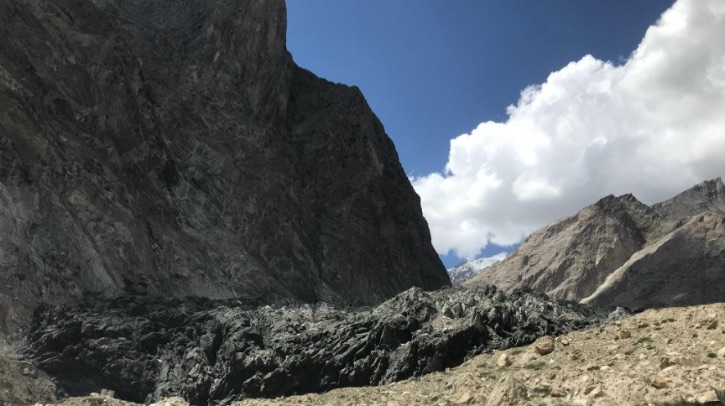The International Centre for Integrated Mountain Development (ICIMOD) and the University of Portsmouth have collaborated on a new study which has revealed how satellite images can be used to monitor the potential for lake drainage hazards.
The study, published in the Journal of Glaciology, monitored a lake dammed by a surge of the Shisper glacier, located in the Karakoram mountain range, which extends across the borders of Pakistan, China and India. The research highlighted that during glacier surges, the ice begins moving at speed and the front can advance, in some settings blocking rivers and forming lakes that put communities and infrastructure downstream at risk of flooding.
Shisper glacier lake lifecycle
The glacier began surging in early 2018, blocking a river and forming an ice-dammed lake. Researchers from the University of Portsmouth and the International Centre for Integrated Mountain Development analyzed the phenomenon using satellite images captured by the European Space Agency. They identified that the lake underwent six phases of filling and drainage, continuing even after the glacier stopped surging in 2020.
Four of the phases led to the formation of a large lake that grew to its maximum size by May each year, threatening the safety of the communities below. On average, it took at least 155 days for the lake to fill.
The largest lake phase reached a volume of 33,700,000m3 in May 2022. Each large lake phase drained rapidly between May and July as glacial lake outburst floods (GLOFs), typically over one to two days.
The GLOF in May 2022 caused the Hassanabad Bridge, a major crossing point on the Karakoram Highway between Pakistan and China, to collapse and also caused extensive damage to nearby homes, buildings and hydropower infrastructure.

Protecting nearby communities
Pakistan is home to the largest number of glaciers outside of the polar regions. The new study highlights the importance of closely monitoring glacier surges and any lakes that subsequently form, to reduce potential future damage.
Lead author, Dr Harold Lovell, senior lecturer and glaciologist from the University of Portsmouth, said, “It’s hard to predict when glaciers will surge and whether they will dam dangerous lakes, but we know that in some settings this is more likely. Satellite data allows us to identify and track surges, potentially helping to pinpoint locations where lakes may be dammed in the future. This information is crucial for helping to warn communities about periods of increased flood risk.”
The findings also revealed that hazards caused by glacier surges – like the formation of large lakes – can continue for many years after the surge has ended.
Co-lead author, Dr Sher Muhammad from the International Centre for Integrated Mountain Development, added, “Even after the Shisper glacier stopped surging and advancing, the lake continued to form and drain for two more years, causing damaging floods with estimated losses of over US$4m to private property.
“However, our data suggests that the phases of lake formation resulting from the Shisper glacier’s latest surge have ended, which may offer a period of respite, particularly to residents of Hassanabad village who live in its path.”
The researchers also underlined that the risks of glacier-related hazards in the region could be reduced through the implementation of community-based early warning systems (EWS), the installation of gabion walls for flood protection and the building of community and infrastructure resilience.
In related news, NASA recently awarded a two-year, US$1.23m grant to a team led by Penn State College of Information Sciences and Technology (IST) to improve atmosphere and ocean forecasts by incorporating artificial intelligence (AI) and satellite data into current forecasting models. Click here to read the full story.



